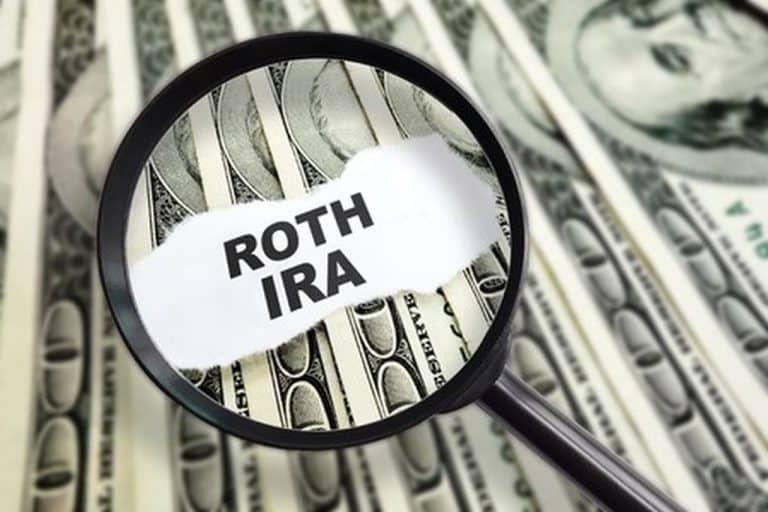Tag Roth IRA
Five tax-smart ways to plan your legacy

Planning your legacy is more than just drafting a will. It is a profound undertaking beyond the mere distribution of assets. Planning your legacy is about ensuring your assets and values endure for generations. It’s about shaping your impact on…
Roth IRA Contribution Limits 2024

The Roth IRA contribution limits for 2024 are $7,000 per person, with an additional $1,000 catch-up contribution for people who are 50 or older. There is a $500 increase from 2023. Roth IRA income limits for 2024 Roth IRA contribution…
Roth IRA and why you probably need one – Updated for 2022

Roth IRA is a tax-exempt investment account that allows you to make after-tax contributions to save for retirement. The Roth IRA has a tax-free status. It is a great way to save for retirement and meet your financial goals without…
Maximizing Roth savings for high-income earners

Maximizing your Roth savings is a terrific way to save for retirement for both high-income earners and professionals at all levels. Roth IRA is a tax-free retirement savings account that allows you to make after-tax contributions to save towards retirement.…
Ten Successful tips for surviving a bear market

Surviving a bear market can be a treacherous task even for experienced investors. If you are a long-term investor, you know that the bear markets are common. Since 1945, there have been 14 bear markets—or about every 5.4 years. Experiencing…
Inflation is a tax and how to combat it

Inflation is a tax. Let me explain. Inflation reduces the purchasing power of your cash and earnings while simultaneously redistributing wealth to the federal government. When prices go up, we pay a higher sales tax at the grocery store, restaurants,…
Roth IRA Contribution Limits 2023

The Roth IRA contribution limits for 2023 are $6,500 per person with an additional $1,000 catch-up contribution for people who are 50 or older. There is $500 increase from 2022. Roth IRA income limits for 2023 Roth IRA contribution limits…
Roth IRA Contribution Limits 2022

The Roth IRA contribution limits for 2022 are $6,000 per person with an additional $1,000 catch-up contribution for people who are 50 or older. There is no change from 2021. Roth IRA income limits for 2022 Roth IRA contribution limits…
Effective Roth Conversion Strategies for Tax-Free Growth

Roth conversion of your tax-deferred retirement savings can be a brilliant move. Learn the must-know rules and tax implications of Roth Conversion before you decide if it is right for you. What is a Roth Conversion? Roth Conversion is the…
Roth IRA Contribution Limits 2021

The Roth IRA contribution limits for 2021 are $6,000 per person with an additional $1,000 catch-up contribution for people who are 50 or older. Roth IRA income limits for 2021 Roth IRA contribution limits for 2021 are based on your…
IRA Contribution Limits 2022

The IRA contribution limits for 2022 are $6,000 per person with an additional $1,000 catch-up contribution for people who are 50 or older. Contribution limits remain the same as 2021. What is an IRA? IRA or Traditional IRA is a…
IRA Contribution Limits 2021

The IRA contribution limits for 2021 are $6,000 per person with an additional $1,000 catch-up contribution for people who are 50 or older. What is an IRA? IRA or Traditional IRA is a tax-deferred retirement savings account that allows you…
IRA Contribution Limits 2020

The IRA contribution limits for 2020 are $6,000 per person with an additional $1,000 catch-up contribution for people who are 50 or older. What is an IRA? IRA or Traditional IRA is a tax-deferred retirement savings account that allows you…
Roth IRA Contribution Limits 2020

The Roth IRA contribution limits for 2020 are $6,000 per person with an additional $1,000 catch-up contribution for people who are 50 or older. Roth IRA income limits for 2020 Roth IRA contribution limits for 2020 are based on your…
How to Survive the next Market Downturn

Everything you need to know about surviving the next market downturn: we are in the longest bull market in US history. After more than a decade of record-high stock returns, many investors are wondering if there is another market downturn…
9 Smart Tax Saving Strategies for High Net Worth Individuals

The Tax Cuts and Jobs Act (TCJA) voted by Congress in late 2017 introduced significant changes to the way high net worth individuals and families file and pay their taxes. The key changes included the doubling of the standard deduction to $12,000…
Investing in Small Cap Stocks

Small cap stocks are an important part of a diversified investment portfolio. They had provided high historical return and diversification, which are key factors in the portfolio management process. Many flagship companies started as small businesses in a local market…
A beginner’s guide to retirement planning

Many professionals feel overwhelmed by the prospect of managing their finances. Often, this results in avoidance and procrastination– it is easy to prioritize career or family obligations over money management. Doing so puts off decision making until retirement looms. While…
Contact Us

